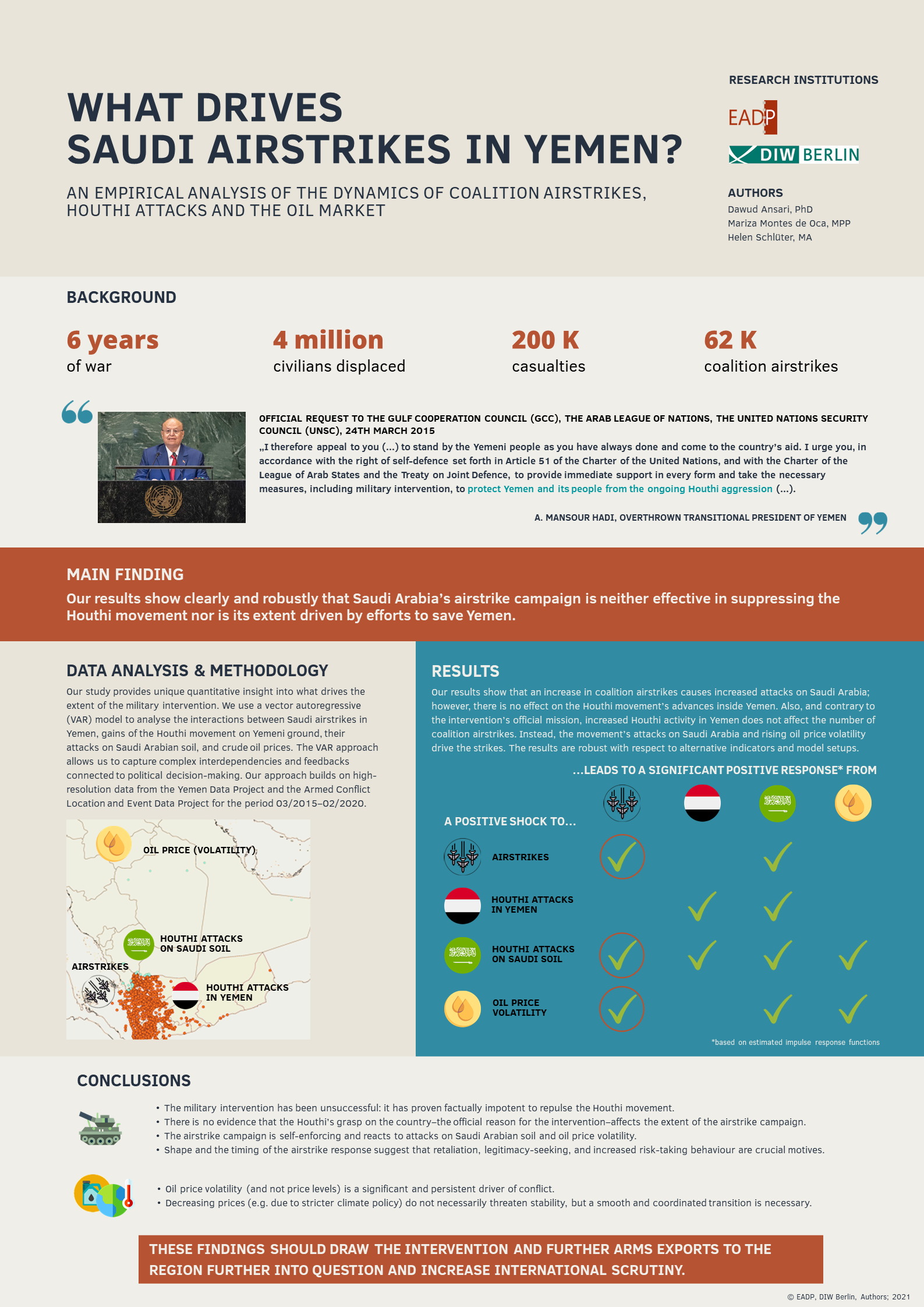
New EADP Discussion Paper Gives Guidance on How to Communicate in Transdisciplinary Projects
May 9, 2021
First OASIS Project Successful: EADP and Bondh e Shams Bring Clean Water to Rural Yemen
December 23, 2021New Study Reveals Yemen War Dynamics: Retaliation and Oil Prices Drive Coalition Airstrikes Press release
EADP and DIW researchers analyse conflict indicators in Yemen – First quantitative evidence on war dynamics – No evidence that airstrikes are targeted at or successful in suppressing the Houthi movement – Oil price volatility and retaliation drive the airstrike campaign – Uncertain oil future can exacerbate conflict
The Yemen war, now in its sixth year, has caused more than 200,000 deaths and the world’s largest humanitarian crisis. A foreign military intervention under the leadership of Saudi Arabia was launched in March 2015, after Yemen’s transitional government was overthrown by Ansar Allah, also known as the Houthi movement. The intervention followed a formal request by ousted transitional President Abdul Mansour Hadi. In letters to the UN Security Council, the Arab League of Nations, and the GCC, he invoked Article 51 of the UN Charter, demanding international support “including military intervention, to protect Yemen and its people from the ongoing Houthi aggression”.
A joint study by researchers from EADP and the German Institute for Economic Research (DIW Berlin), currently in peer review, casts further doubt about the integrity, the success, and the goals of the military intervention. In the first thorough statistical analysis of the conflict, the researchers find no evidence that the Houthi movement’s actions inside Yemen influence the number of coalition airstrikes. In addition, the airstrikes do also not have any significant effect on suppressing the Houthi movement’s advances. Dawud Ansari, the lead researcher of the study and director of EADP, notes: “As a bottom-line, the airstrike campaign is both unjustified and ineffective. Our numbers show that the coalition’s behaviour is inconsistent with the intervention’s official goal, and it shows no effect on the Houthis’ advances in Yemen.”
Instead, the investigation has shown that coalition airstrikes and Houthi attacks on Saudi Arabia drive each other. Helen Schlüter, a political scientist and one of the study’s authors, explains: “We see that increased risk-taking behaviour and retaliation seem to cause the dynamics. Ordinary Yemenis are subjected to a senseless circle of violence in which they have no part.” Moreover, the vector autoregressive model has identified oil price volatility as a major driver–the number of Saudi airstrikes increases with oil market uncertainty. The result underlines that not efforts to save Yemen but domestic factors influence the airstrike campaign. Mariza Montes de Oca, an economist at DIW Berlin and one of the investigators, adds: “These findings have relevance far beyond the Yemen conflict. They hint to the fact that the climate transition must be precisely planned and present a clear trajectory to prevent devastating uncertainty.”



